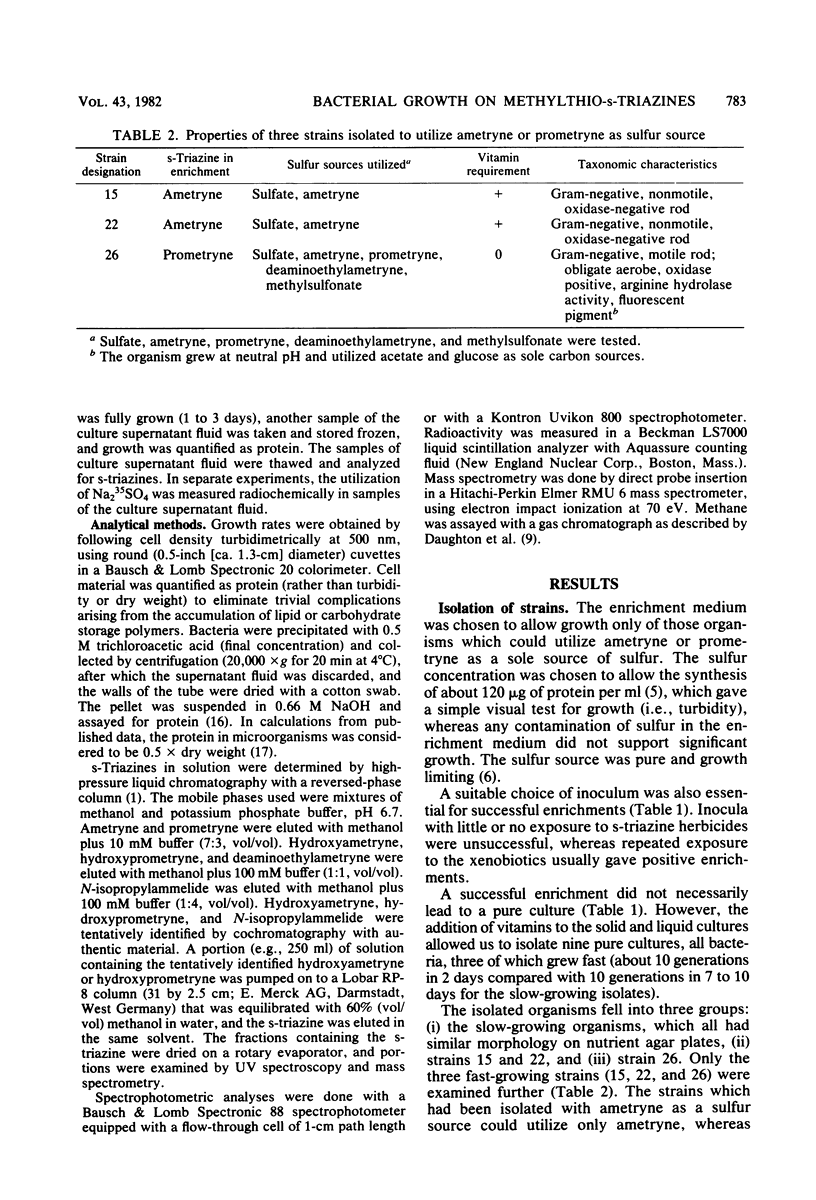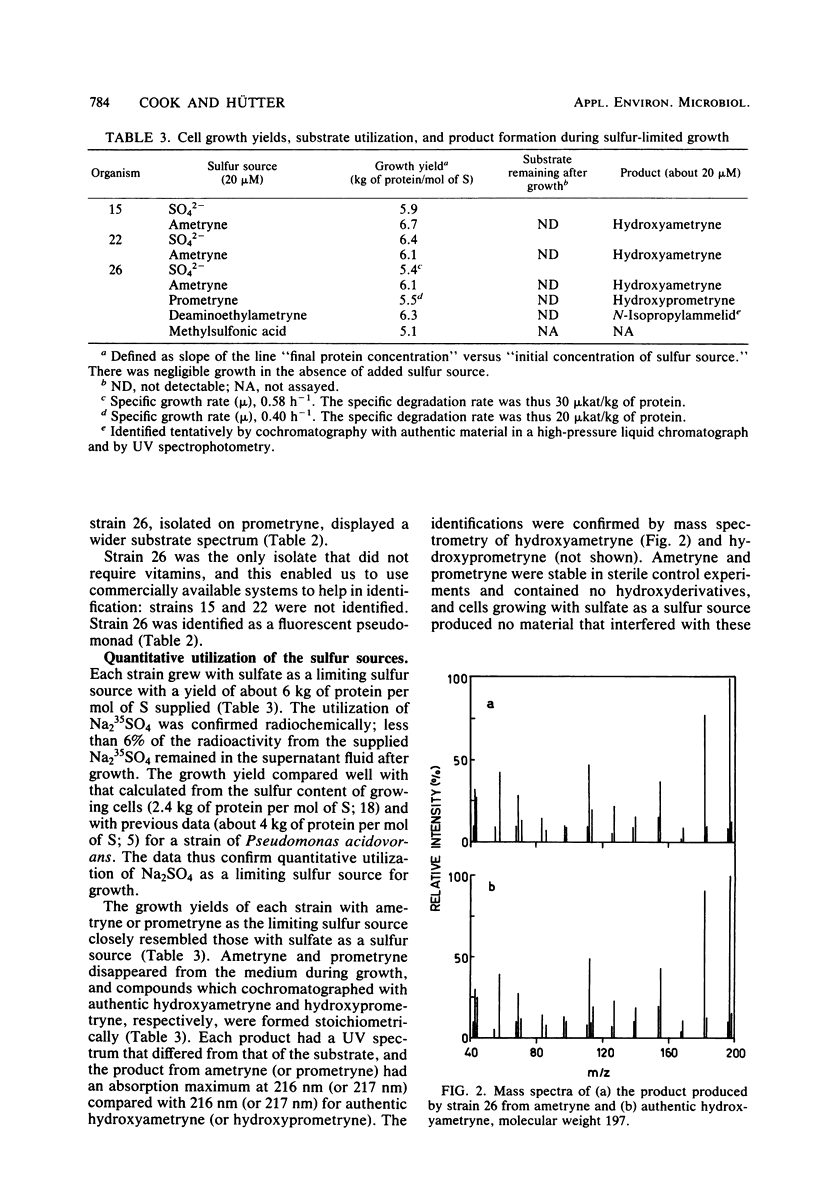Abstract
Bacteria were isolated that could utilize quantitatively the s-triazine herbicide prometryne [N,N′ -bis(1-methylethyl)-6-(methylthio)-1,3,5-triazine-2,4-diamine] or ametryne [N-ethyl-N′-(1-methylethyl)-6-(methylthio)-1,3,5-triazine- 2,4-diamine], or both, as a sole source of sulfur for growth. The success of enrichments depended on previous exposure of the soil inoculum to s-triazine herbicides. Deaminoethylametryne [4-(1-methylethyl)amino-6-(methylthio)-1,3,5-triazine-2-(1H)-one], methylsulfonic acid, and sodium sulfate could also be used as sulfur sources. Utilization of a compound was quantified as the growth yield per mole of sulfur supplied. Yields were about 6 kg of protein per mol of sulfur. The product of the desulfuration of an s-triazine was identified as the corresponding hydroxy-derivative. This is the first substantiated report of the utilization of these s-triazines as sulfur sources by bacteria.
Full text
PDF





Selected References
These references are in PubMed. This may not be the complete list of references from this article.
- Cook A. M., Daughton C. G., Alexander M. Benzene from bacterial cleavage of the carbon-phosphorus bond of phenylphosphonates. Biochem J. 1979 Nov 15;184(2):453–455. doi: 10.1042/bj1840453. [DOI] [PMC free article] [PubMed] [Google Scholar]
- Cook A. M., Daughton C. G., Alexander M. Desulfuration of dialkyl thiophosphoric acids by a pseudomonad. Appl Environ Microbiol. 1980 Feb;39(2):463–465. doi: 10.1128/aem.39.2.463-465.1980. [DOI] [PMC free article] [PubMed] [Google Scholar]
- Cook A. M., Daughton C. G., Alexander M. Phosphorus-containing pesticide breakdown products: quantitative utilization as phosphorus sources by bacteria. Appl Environ Microbiol. 1978 Nov;36(5):668–672. doi: 10.1128/aem.36.5.668-672.1978. [DOI] [PMC free article] [PubMed] [Google Scholar]
- Daughton C. G., Hsieh D. P. Accelerated parathion degradation in soil by inoculation with parathion-utilizing bacteria. Bull Environ Contam Toxicol. 1977 Jul;18(1):48–56. doi: 10.1007/BF01686304. [DOI] [PubMed] [Google Scholar]
- Kennedy S. I., Fewson C. A. Enzymes of the mandelate pathway in Bacterium N.C.I.B. 8250. Biochem J. 1968 Apr;107(4):497–506. doi: 10.1042/bj1070497. [DOI] [PMC free article] [PubMed] [Google Scholar]
- Murray D. S., Rieck W. L., Lynd J. Q. Utilization of Methylthio-s-Triazine for Growth of Soil Fungi. Appl Microbiol. 1970 Jan;19(1):11–13. doi: 10.1128/am.19.1.11-13.1970. [DOI] [PMC free article] [PubMed] [Google Scholar]
- Stanier R. Y., Palleroni N. J., Doudoroff M. The aerobic pseudomonads: a taxonomic study. J Gen Microbiol. 1966 May;43(2):159–271. doi: 10.1099/00221287-43-2-159. [DOI] [PubMed] [Google Scholar]


